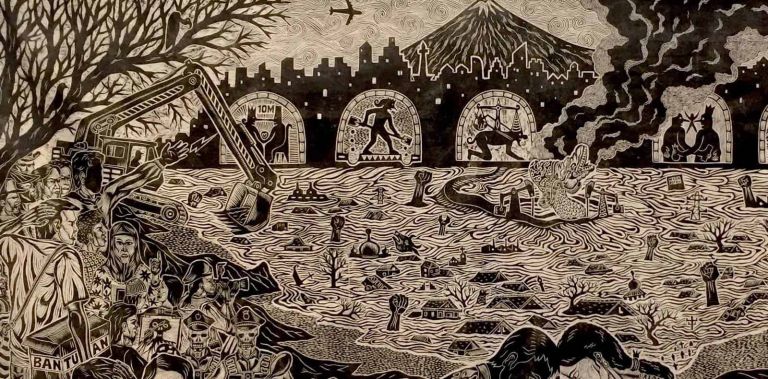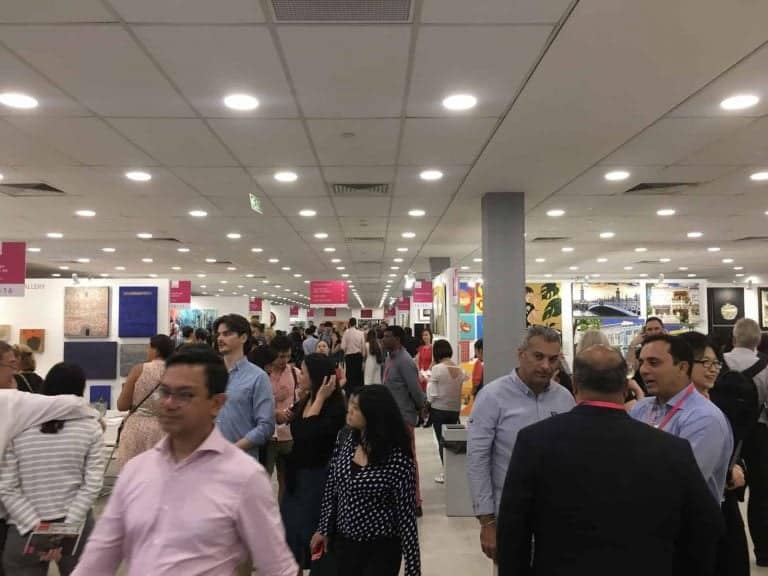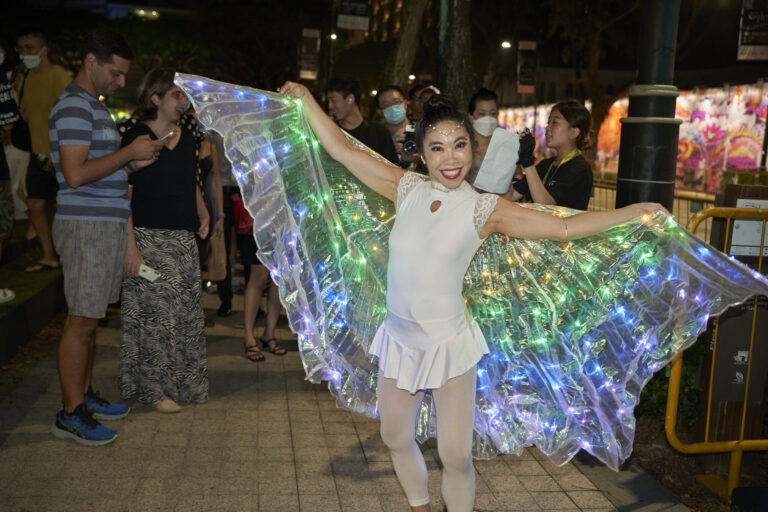Singapore Art Museum’s latest exhibition, The Gift, is centred – as its name suggests – around the concept of gift-giving. As most of us know, having been on both the giving and receiving ends of this exchange, the art of gifting can be pretty complicated. As curator of The Gift Dr June Yap explains, “… a gift often implies obligation or even comes with an expectation of reciprocation.” Much can be read (or misread) into your choice of gift for someone – it can reveal how you regard them and your understanding of what they value and enjoy. With that in mind, here is our “gift guide” for the people in your life, based on some of the artworks in the show.
For your little niece (or nephew) – Donna Ong, The Caretaker, 2008
Children (yes, both girls and boys) have loved dolls and played with them since time immemorial. Pretend-play with dolls helps children practice social interactions – important for developing socio-emotional skills such as empathy.
Indeed, that was probably why dolls were chosen as a symbol of friendship and goodwill and to create a cultural bridge between two nations, the United States and Japan, at a time of rising tensions and hostility. The Friendship Doll Project was initiated by Reverend Sidney Gulick, a former missionary to Japan, in 1926. Children in the US raised money to send American dolls to Japan, while Japanese children, in turn, sent dolls back to America.
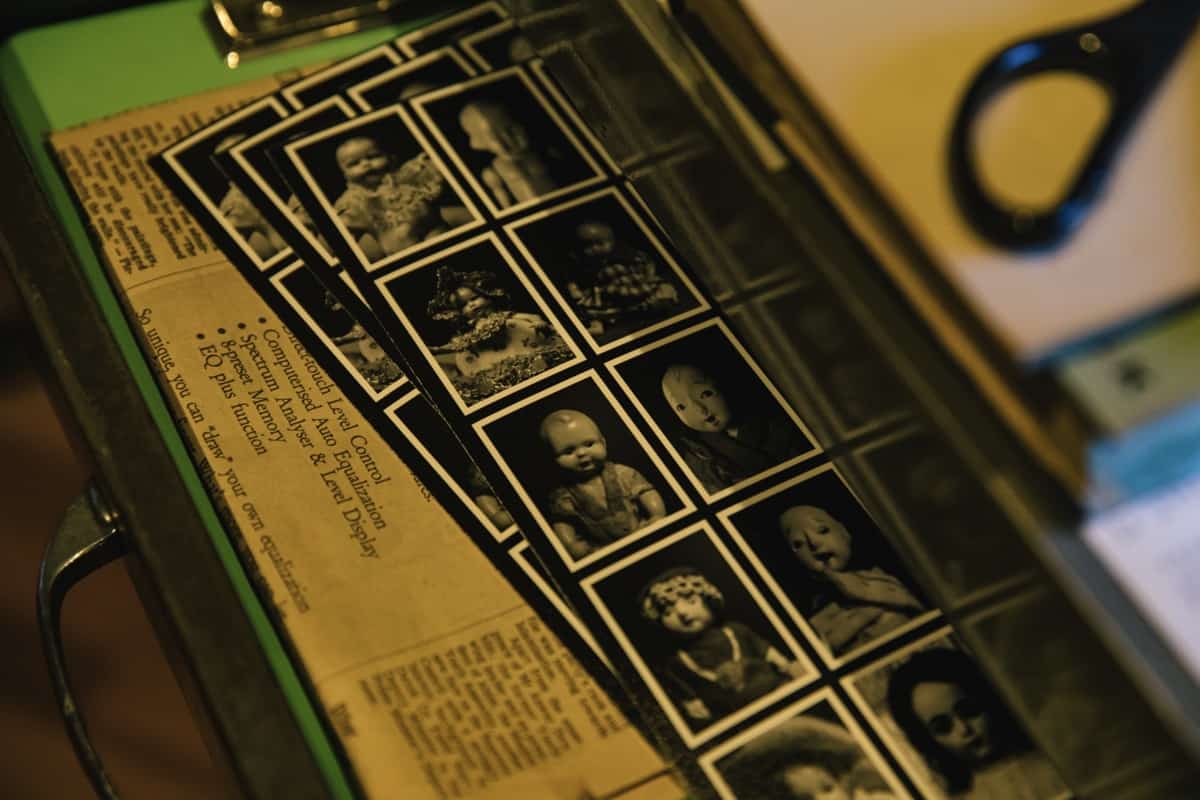
Unfortunately, as history tells us, events intervened which undermined these expressions of goodwill. After the bombing of Pearl Harbor and the entry of the US into World War II, relations between the two countries soured and many dolls were destroyed or stored out of sight.
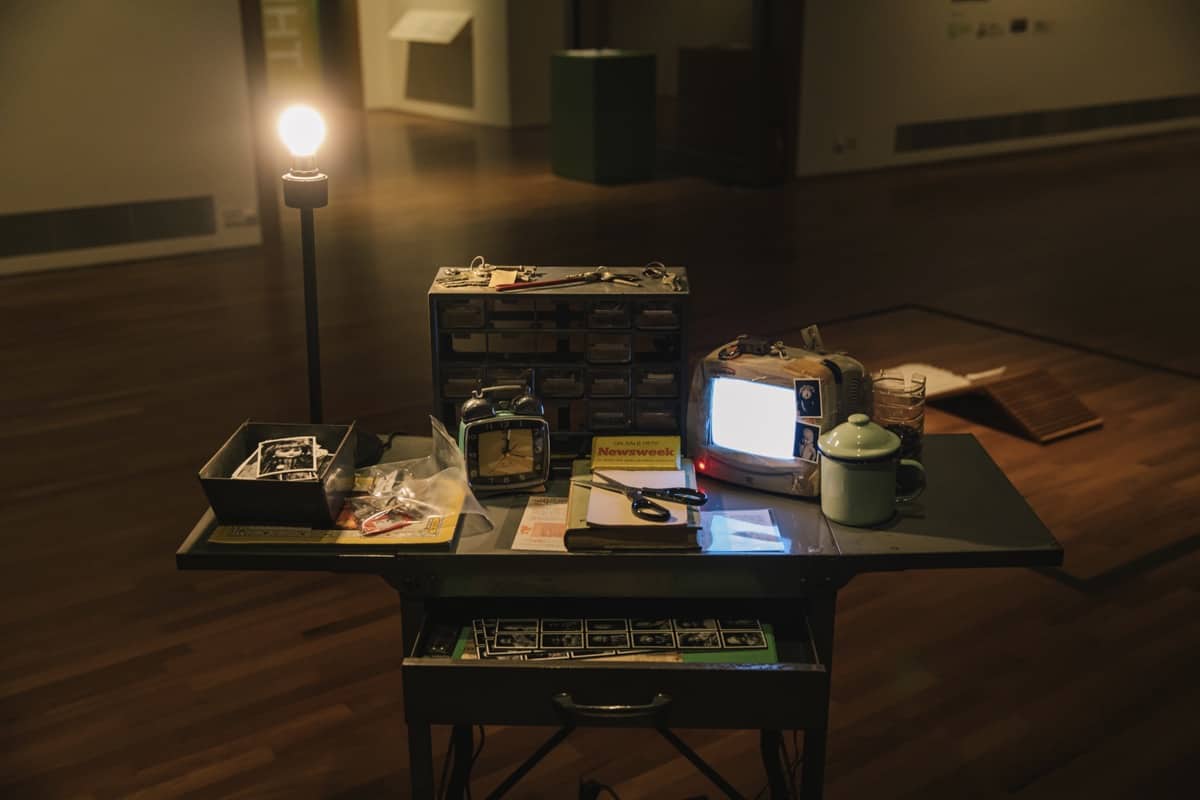
In Donna Ong’s installation The Caretaker, an imaginary caretaker acts as faithful custodian and keeper of the dolls, his room the site where memories are retrieved, recreated and shared. Through small screens placed within the cabinets, video projections stage imagined encounters between the dolls in various landscapes, uniting them once more.
While a doll is a seemingly innocent gift for your little niece or nephew, Ong’s work reveals a much deeper (and darker) implication with this historical context. The dark interiors of the installation may feel a little intimidating at first, but there is much to fascinate and intrigue, evoking a sense of wonder in visitors both young and old.
For your bookworm colleague – Ho Tzu Nyen, The Critical Dictionary of Southeast Asia: F for Fold, 2021
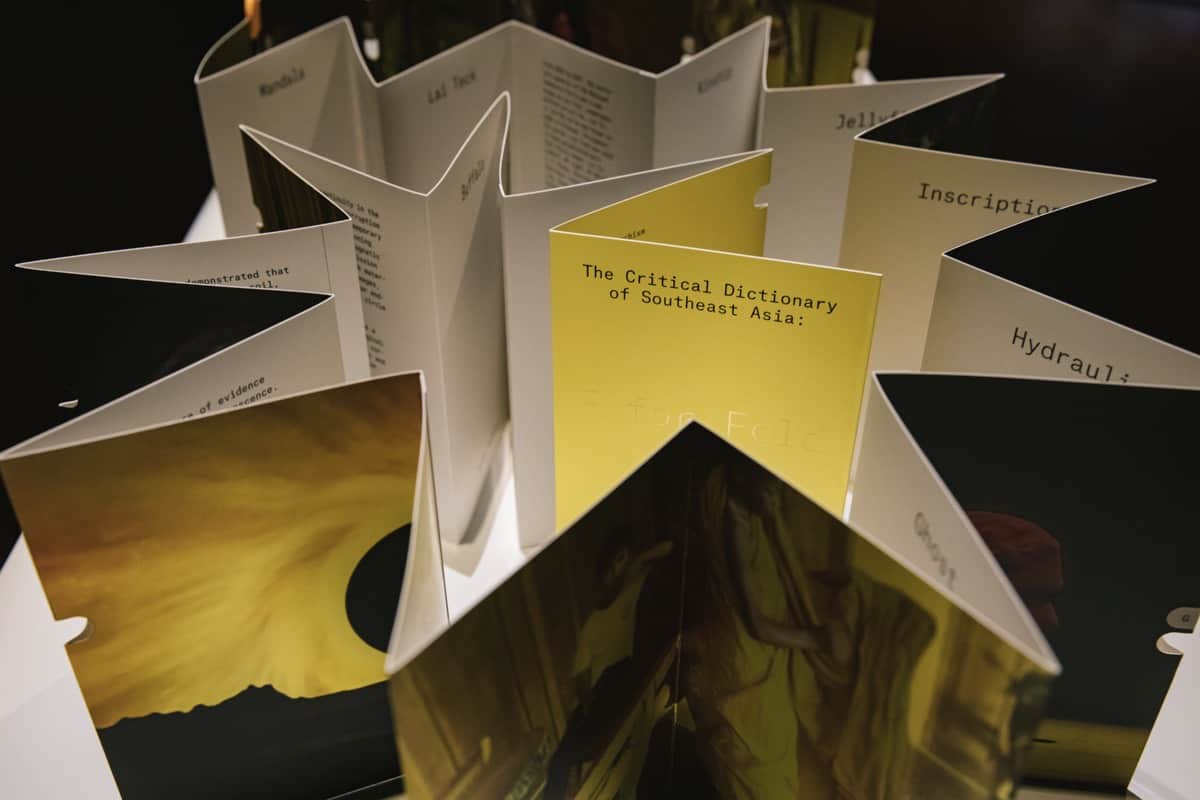
Picking a gift for a cerebral colleague is always tricky so you’d be lucky if Ho Tzu Nyen’s The Critical Dictionary of Southeast Asia: F for Fold was available for presentation to your bookish friend, because it checks all the right boxes.
The very title of Ho’s work provokes deeper reflection. ‘Southeast Asia’ as a concept can barely be considered a term of art, considering its varied meanings within different historical contexts. After a period of research into Southeast Asia for his graduate studies, Ho was intrigued by the question of what, if anything, unites Southeast Asia? In 2012, he embarked on a project dedicated to identifying and collating all the “critical” defining points of what the term could mean. Structured around the letters of the English alphabet, The Critical Dictionary of Southeast Asia project has been presented in various filmic, theatrical and installation formats, and continues to develop. The dictionary is a rich melting pot of ideas and imaginaries, and multiple terms are assigned to certain letters of the alphabet.
In this iteration of The Critical Dictionary, the work takes the form of a sculptural concertina – visible in portions and concealed in others. It includes imagery extracted from the Dictionary’s database of audio-visual images, and the folds appear ‘endless’ with no obvious starting or end point.
This might be the most unusual dictionary you’ll ever see, but it’s also a lot of fun. Its intricate folds add an unexpected touch of childlike whimsy and curiosity to the piece. Visit with your intellectual office buddy, but stay for the gift of an aesthetic deep dive into Southeast Asian regional identity.
For your meditation teacher – Ahmad Sadali, Gunungan Emas (The Golden Mountain)
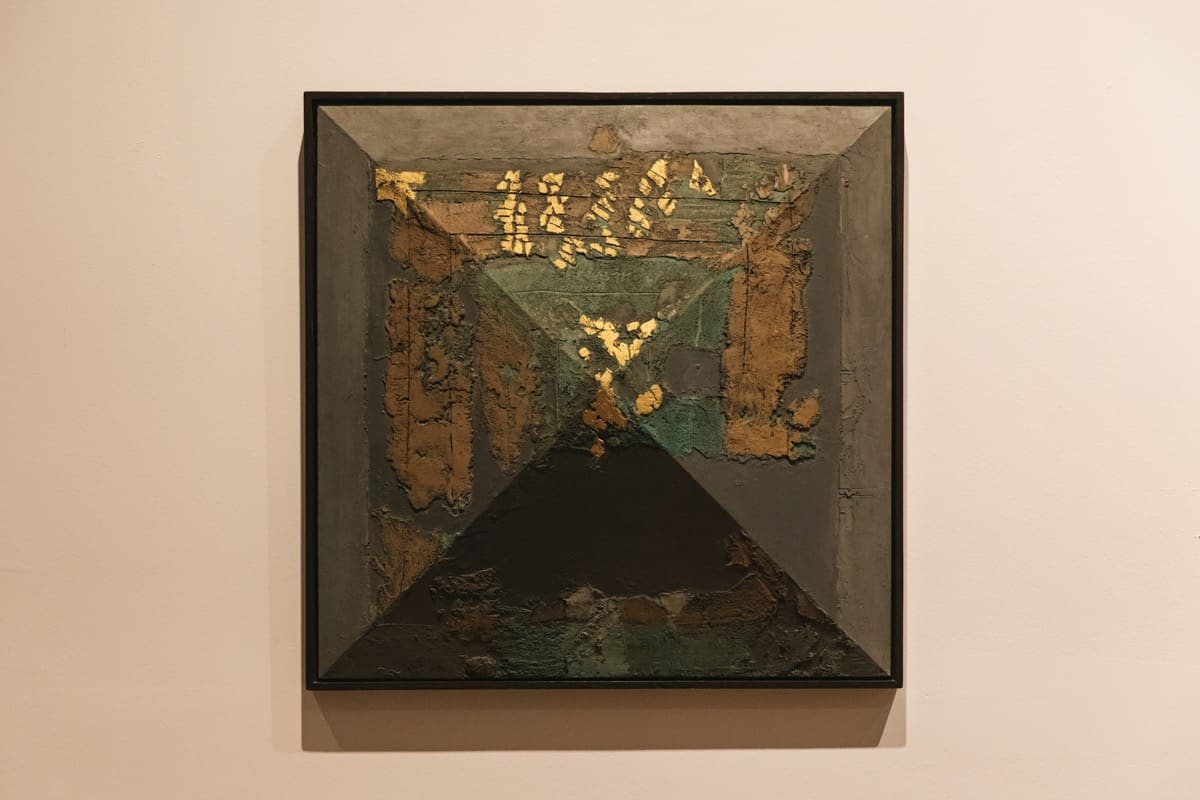
In times of stress and anxiety, what could be better than the sensation of a cool breeze on a mountaintop, with calming views of sweeping vistas and verdant valleys below? Thanks to travel restrictions, the closest we might get to a mountain these days is through a look at Indonesian artist Ahmad Sadali’s 1980 work, Gunungan Emas (or The Golden Mountain). An important alumnus of the Institut Teknologi Bandung (ITB) established in 1947, Sadali’s work here displays shades of the school’s founding ethos which tended to emphasize formal academic training, teaching Western techniques such as geometric abstraction. There is a sense of cultural unmooring as one takes a first look at this work. Ostensibly, there is nothing ‘Asian’ about it, and it could hang anywhere, in any modern or contemporary art gallery in the world.
And yet, the work speaks a secret code that calls out to be unpacked.
Typically understood in Javanese culture to refer to the seat of the gods, mountains are regarded as a fount of cosmic energy and strength. Although executed in an abstract manner, Gunungan Emas provokes deeper thought with its subtle Indonesian cultural references. The work also plays tricks on the viewer’s sense of perception, challenging the boundaries between sculpture and painting, with its pyramidal shape that juts out of its frame.

We’d pick this gift as something you’d offer your meditation guide or teacher because it prompts deep introspective contemplation. There’s nothing loud or brash about this work. It just is. And in its quiet stillness, you’ll surely find a multitude of depths.
For your feminist BFF – Dolorosa Sinaga, Solidarity, 2000
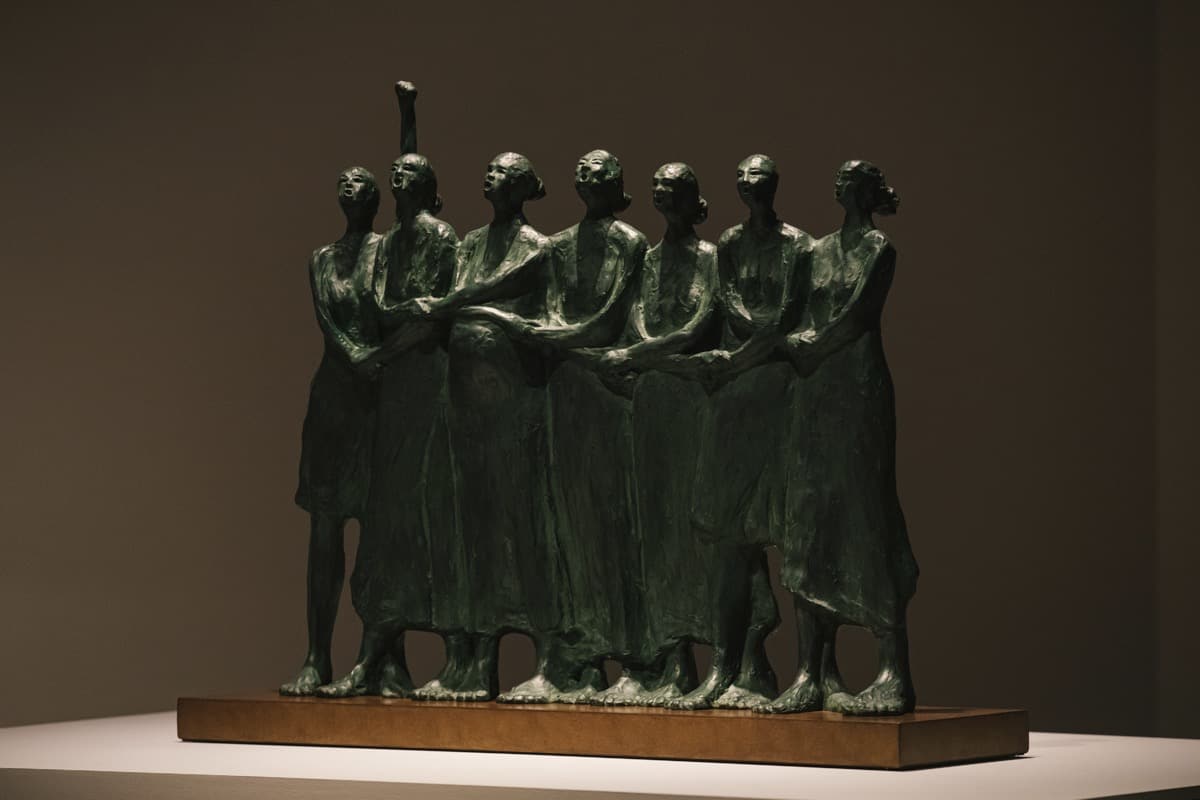
If you have a feminist BFF, treating them to a gift that speaks powerfully for women’s rights would certainly demonstrate your support for a cause that they hold dear.
Sculptor, activist and feminist icon Dolorosa Sinaga’s Solidarity was created as a response to the May 1998 riots in Indonesia. While the civil unrest and violence that swept the country were triggered by various problems, such as food shortages and massive unemployment, ethnic Chinese Indonesians were disproportionately impacted, with widespread reports of human rights and sexual violations against women in particular.
The sculpture features seven women, arms linked and bodies pressed tightly together in unity and solidarity. One of the women raises a clenched fist. Another is visibly pregnant, yet has chosen to join her sisters in this fight. With upturned faces filled with anguish and emotions and mouths wide open in protest, the artist skillfully animates her subjects and breathes vivid life into each one, lending a powerful personification to her message of unity and resistance.
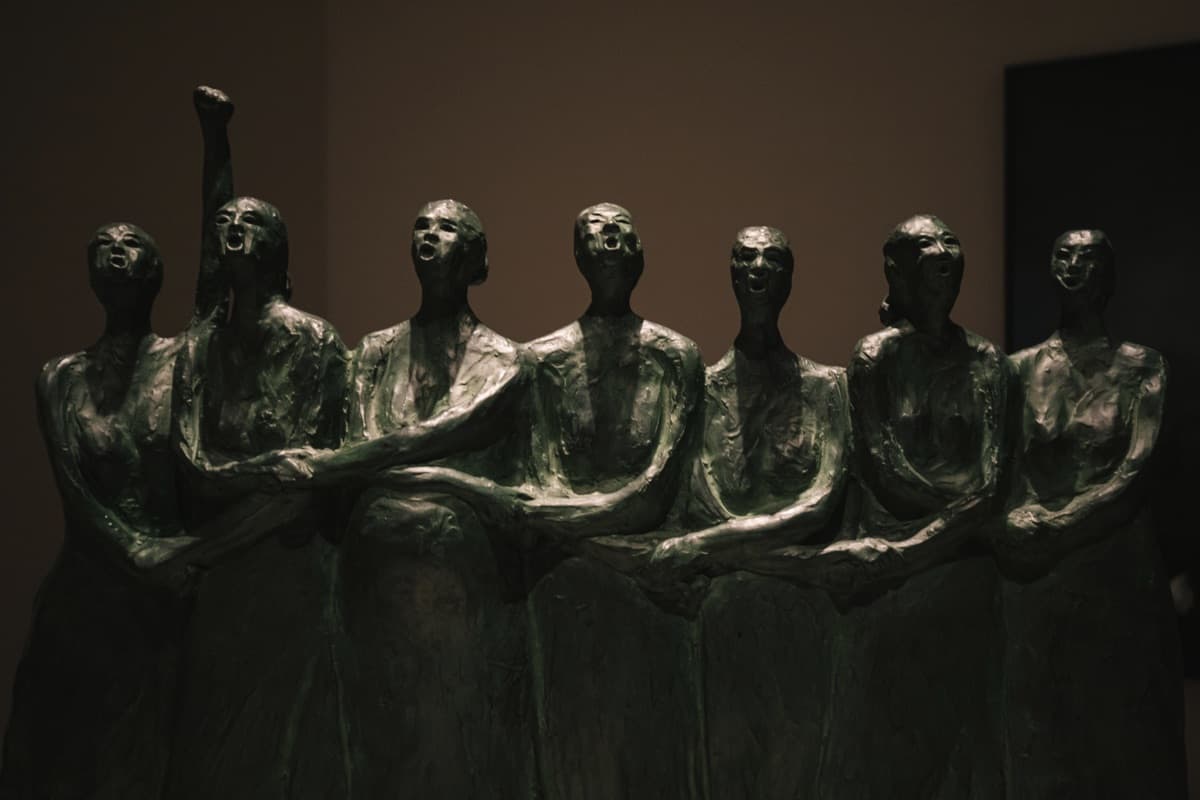
While you can’t actually gift this masterpiece to your BFF, a visit together to see the work in person will no doubt be a moving experience for someone who is dedicated to fighting for the feminist cause and a way for you to let them know how much their energy, passion and activism inspire you.
So, there you have it, dear reader – our little tongue-in-cheek “gift guide” to a few of our favourite works in The Gift. There are many other works in the show that are worth spending time to experience and contemplate, exploring deeper issues such as the nature of exchange, influence and historical entanglements through the lens of gifting.
_______________________________________________
This article is produced in paid partnership with Goethe-Institut. Thank you for supporting the institutions that support Plural.
Editor’s Note: The Gift is presented as one of four related exhibitions in an ongoing transnational project, titled Collecting Entanglements and Embodied Histories, initiated by the Goethe-Institut. The exhibition, which features works from Singapore Art Museum and partner institutions Galerie Nasional Indonesia, MAIIAM Contemporary Art Museum and Nationalgalerie – Staatliche Museen zu Berlin, runs from 20 August to 7 November 2021 at National Gallery Singapore’s The Ngee Ann Kongsi Concourse Gallery.






